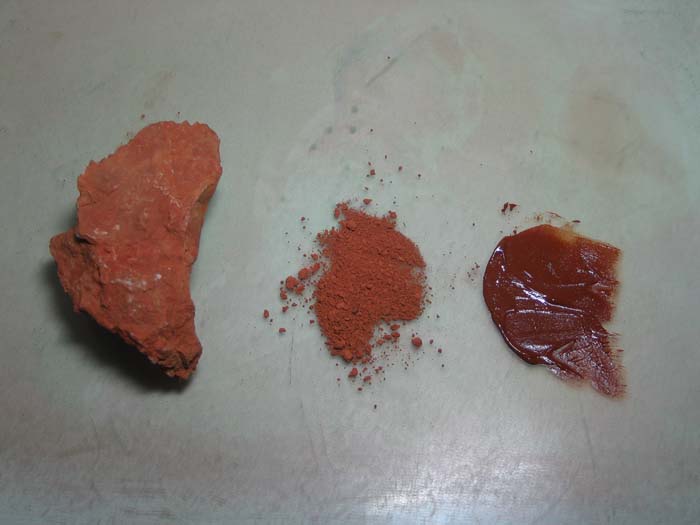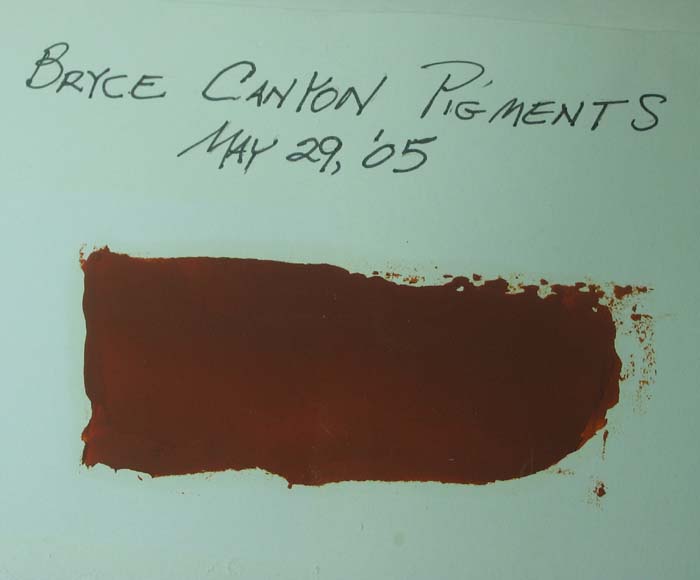 Several years ago while traveling in the Southwest, we visited Utah’s famous Bryce and Zion National Parks. As many of you probably know, the hills there are spectacular colors, glowing with reds and golds in endless varieties. Because I did not want any trouble from those pesky park rangers, I waited until we were outside of the boundaries of the park to gather some dirt and rocks and put them in the trunk of the car for later use.
Several years ago while traveling in the Southwest, we visited Utah’s famous Bryce and Zion National Parks. As many of you probably know, the hills there are spectacular colors, glowing with reds and golds in endless varieties. Because I did not want any trouble from those pesky park rangers, I waited until we were outside of the boundaries of the park to gather some dirt and rocks and put them in the trunk of the car for later use.
After our return, I did a little research, and learned it is reasonably easy to make pigment from this type of material. First, the larger particles were ground in an old coffee bean grinder, and separated as to sizes in a sieve. Then each batch was washed with many rinsings of fresh water, and then dried by laying out on a flat surface for a while.
The next step was to actually make the paint. I used a muller and grinding slab and ground the pigment with linseed oil, making a very small amount. Shown in the image above are the three stages of the pigment, rock, powder, and finally, paint.

A very important issue to address was the permanency of the pigment, because I had no way of knowing if it would be an archival color. To do this, I made a color swatch, and carefully dated it. After it was dry, barrier paper was placed over one half of the color, and put it in a window with a southern exposure.
Shown here is the actual pigment test that has been in that window for two years. The barrier paper was placed exactly down the center of the swatch vertically and shows no noticeable fading. Maybe this paint will be used to paint a picture of Bryce Canyon sometime, in the future, but I think I will wait at least two more years, just to be sure of the permanency. Therefore I will not be using this pigment for my project at this time
.

thanks for sharing these experiments…it’s very interesting to see another human being going thru the same, slightly esoteric, dicoveries. Last fall we drove cross country and I collected rocks and clays all along the way. Utah is amazing. My little collections made the long drive much more exciting. It’s great to buy the best possible pigments but there is an incomparable mystery in making a discovery of your own that connects you back across time to the first humans who ever made similar colors. That richness of the soul finds it’s way into your art.
Dear Margaret, There is a tradition in the old European paintings trade for red Sienna. All red Sienna is made from natural yellow Sienna by the process of calcination. The ideal of a burnt Sienna is the most transparent warm ( brownish ) red earth pigment. We regard all ochres, synthetic iron oxides etc as fakes for burnt Sienna. Best colorful regards Georg Kremer